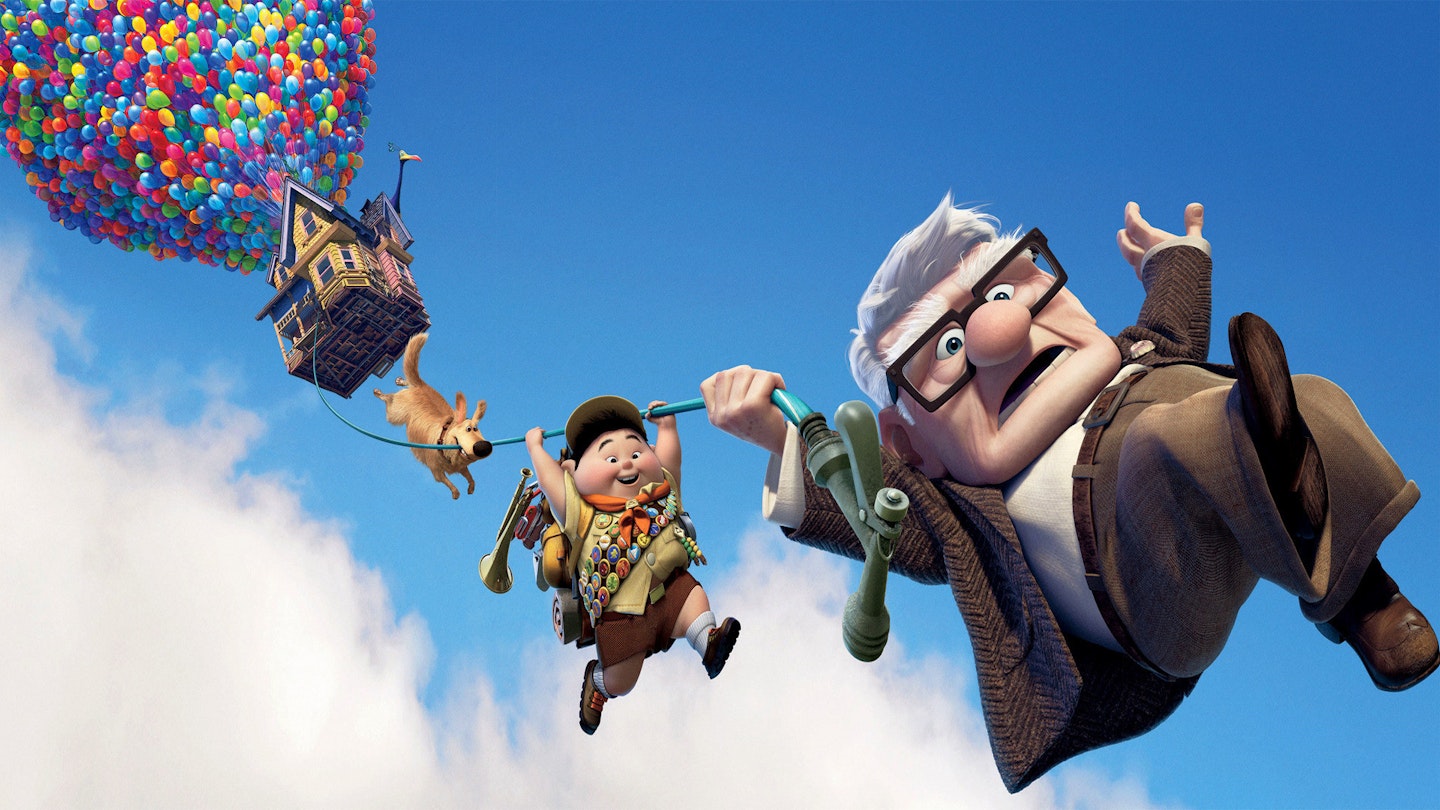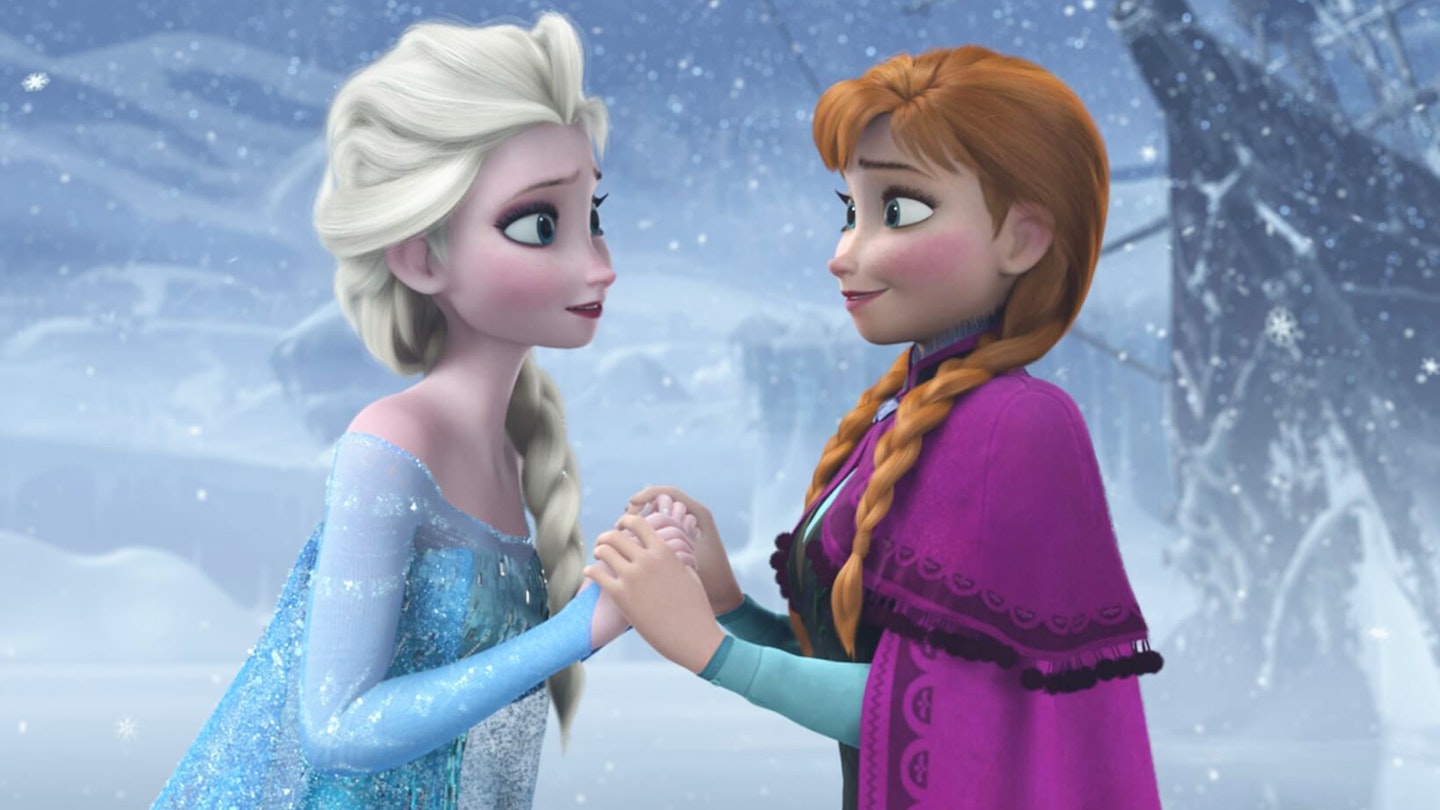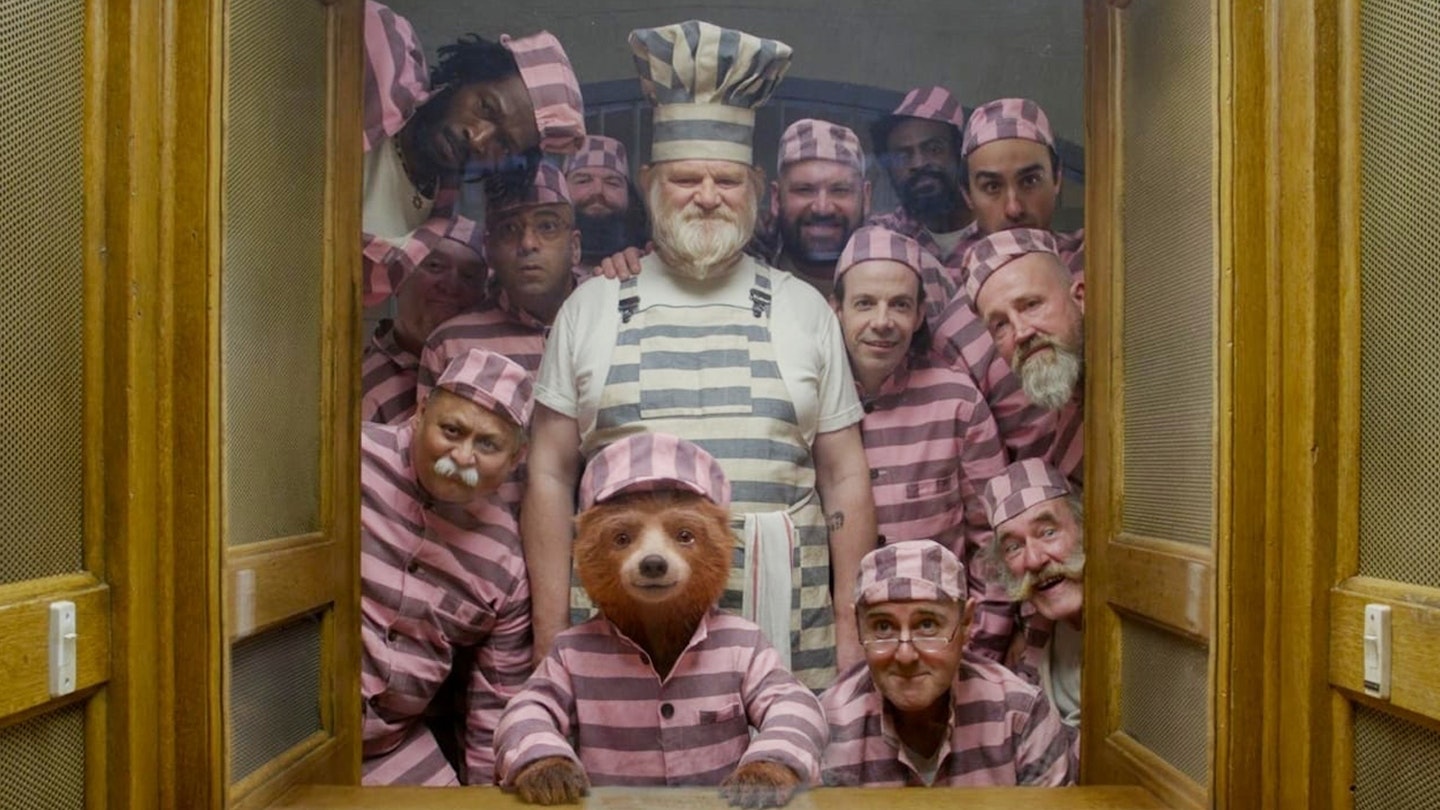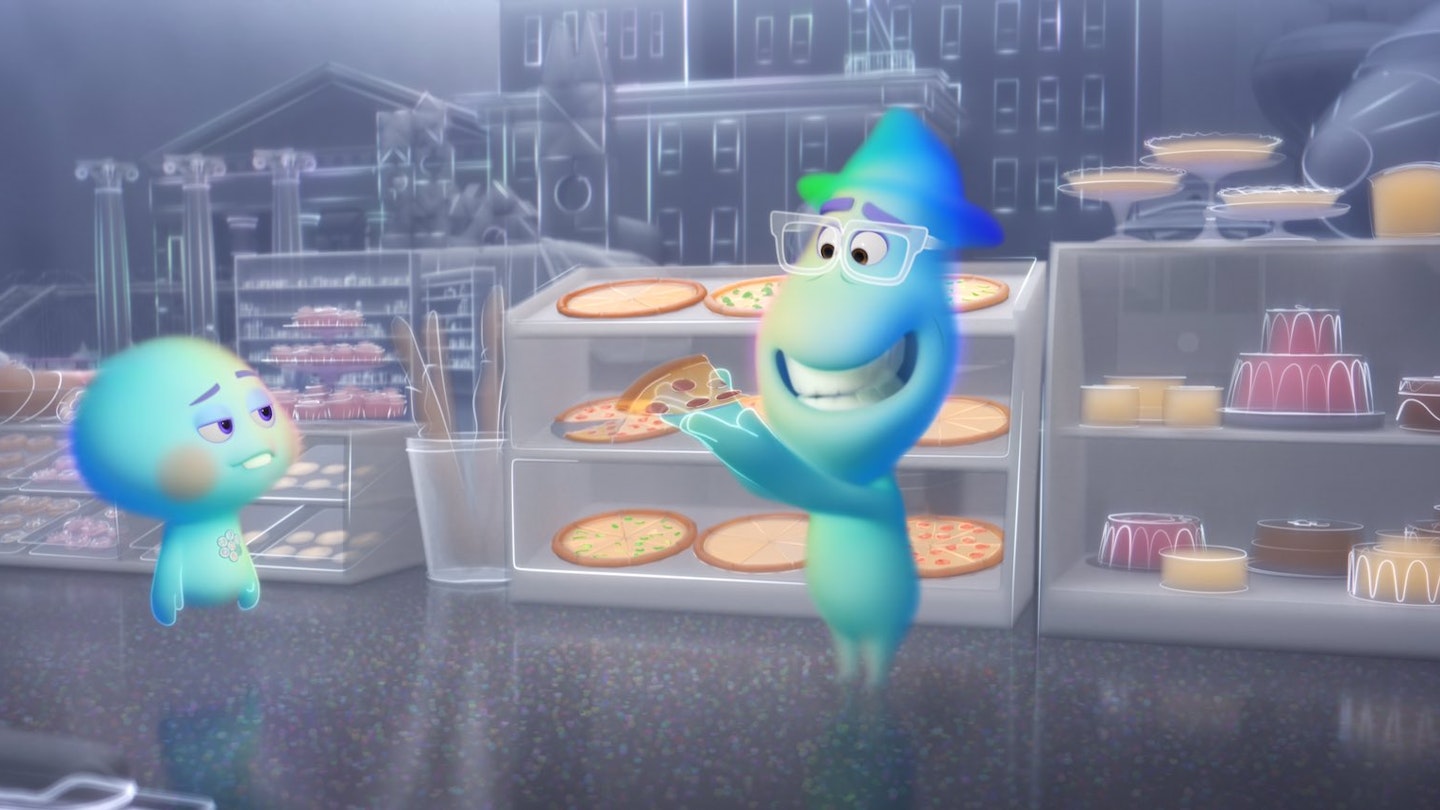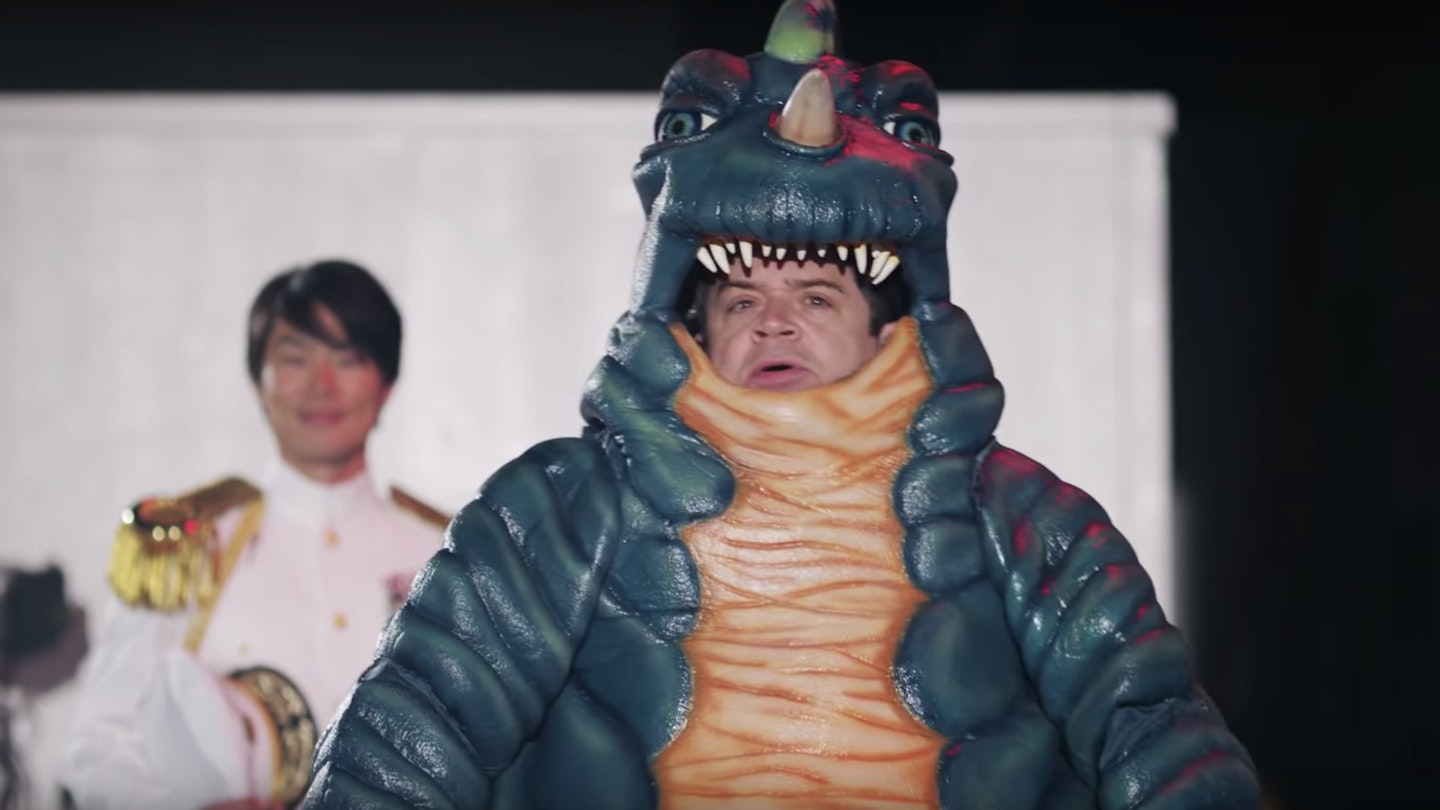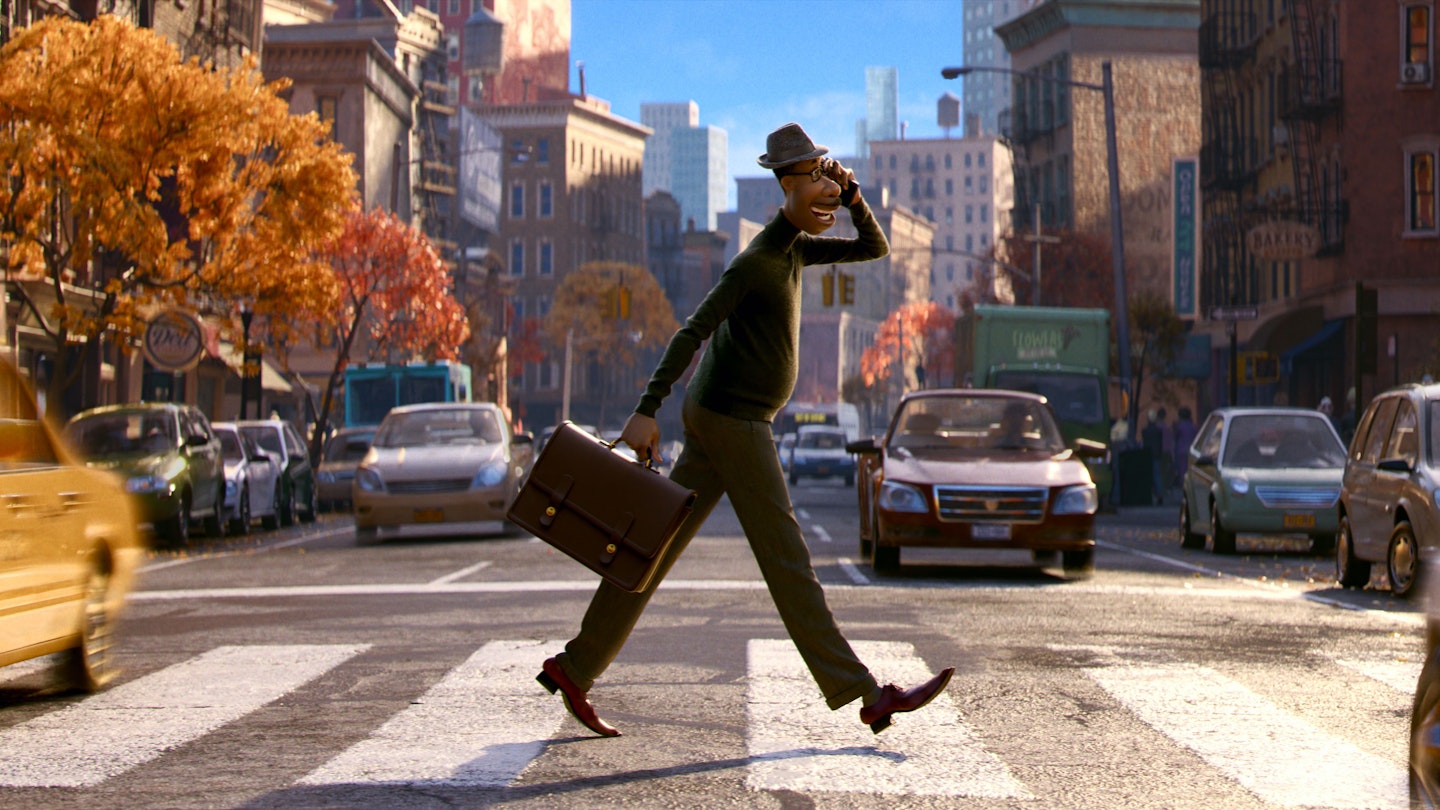In 1982, Werner Herzog made Fitzcarraldo, the story of an over-zealous Irishman (bonkers Klaus Kinski) who, in his quest to bring opera to the South American jungle, drags a huge steamer up and over a mountain. An epic, visionary, never-to-be-repeated slice-of-life action movie, it is also an unlikely touchstone for an animated summer entertainment, the likes of which are usually powered by focus groups and the need to tie in Happy Meals. Like Fitzcarraldo, Up, Pixar’s tenth feature-length slice of genius, is driven by a tenacious lead character dragging his home across the jungle, a real cinematic width and a sense of wonder at both nature and the burden of dreams. Unlike Fitzcarraldo, Up will break your heart in the first five minutes, boasts scene-stealing dogs with high-pitched voices and stars a rare exotic bird called Kevin. Herzog missed a trick there. A bird called Kevin would have done wonders for Fitzcarraldo’s box office.
If the traditional view of animation is that it is kiddie-aimed fare with a dose of adult slyness smuggled inbetween the primary colours and thrills and spills, Pixar appears to work on opposite principles. Even by its own standards, Up stretches the limits of what stories are permissible in mainstream animation. For all of WALL-E’s wordless abstraction, it still had sci-fi trappings, whizz-bang spaceships and cute robotic sidekicks. Here, the treatment and imagery is even more bizarre. It’s a character study of a cantankerous old git. It’s a buddy movie where the buddies are separated by 70 years. It’s a love story where the love transcends death.
Up also reveals an interesting retro reading on Pixar’s previous heroes, recasting the leads as figures stuck in a rut and looking for a way out of their status quo: the factory-working drones of Monsters, Inc., oppressed by the need to garner children’s screams; the obsolete superheroes of The Incredibles marooned in suburban mediocrity; the sewer-dwelling rat who dreams of a five-star kitchen in Ratatouille; WALL-E’s trash-compacting robot who yearns for life (and love) beyond the garbage. In Up’s case, the hero, Carl Fredricksen, is literally tethered to his house, dragging it across exotic South American landscapes, but in reality he’s tied to his memories of a previous life. It’s this that gives the U-rated thrills huge emotional heft.
As well as Fitzcarraldo, Up also shares trace elements with Chaplin, The Station Agent, The Wizard Of Oz, It’s A Wonderful Life, About Schmidt, Gran Torino and Hitchcock, so given its affectionate melting pot of filmic influences, it is perhaps apt that the movie starts with a little boy sat enraptured by the flickering images on a cinema screen. Carl Fredricksen, his eyes wide beneath aviator goggles, sits glued to the exploits of intrepid explorer Charles Muntz, detailed in a lovingly mounted mock-’30s newsreel, mouthing along with Muntz’s catchphrase, “Adventure is out there!” This ’30s milieu looms large: the entire film is fuelled by that decade’s spirit of derring-do, the thrill of hero worship and the sense of the world as a huge playground waiting to be explored. As Carl leaves the movie theatre, he imagines the newsreel narrator describing his journey home as a grand adventure, his imagination turning stepping over the cracks in the pavement into jumping over the widest ravines. It’s a lovely gracenote that acknowledges the importance of dreaming (and day-dreaming) within everyday life without once pouring on any sentimental, saccharine claptrap.
On the way home, Carl hooks up with fellow Muntz fan and wannabe adventurer Ellie (who looks like the kid sister of The Incredibles’ Helen Parr), and what follows is the most beautifully wrought, poetic love story of the year. As the couple’s dreams of adventures in far-flung places get parlayed into the reality of everyday life, Docter and Peterson provide snapshots of married life, a kind of Revolutionary Road without the harsh shouting, that movingly document the tiny triumphs (turning a rundown house into a Technicolor dream home) and crushing catastrophes (Ellie’s sad discovery at the hospital) that constitute a life. It’s a perfect piece of simple story-telling so lucid and moving that if you left the movie at that point, you’d feel thoroughly satisfied that you’d got your money’s worth.
Yet, happily, Up has plenty more surprises in its locker. Resembling a boxed version of Guess Who’s Coming To Dinner-era Spencer Tracy, old man Carl (voiced by Ed Asner), withdrawn from life and facing eviction from his cherished love nest, comes up with a plan to finally realise his long-held dreams. Working his entire life as a balloon vendor, the plucky pensioner ties his inventory to his house, floating himself, his home and the movie into an entirely different zone of unpredictability. The first surprise is that Carl is not alone: an eager-beaver Junior Wilderness Explorer named Russell, desperate to earn his ‘Assist The Elderly’ badge, has stowed away on Carl’s porch. Russell boasts more buoyancy than all the old man’s balloons put together, and his relationship with Carl is tenderly etched. The arc of Carl’s initial disdain to the pair’s mutual companionship and dependency might be obvious, but the bond never feels forced.
What this second phase of Up doesn’t have is the kind of tight plotting that makes the best of Pixar sing (it also has one of the studio’s weakest villains), but its more freeform approach delivers some real delights. There is a run-in with colourful wildlife: the rare exotic bird Russell dubs Kevin is straight off the Chuck Jones drawing pad, a space-cadet version of Road Runner; in a genius move, a pack of dogs on the trail of the bird are able to vocalise their inner thoughts and obsessions through electronic collars. The best of this bunch is Dug (hilariously voiced by co-director Peterson), a goofy, endearing nerd of a mutt. Up also delivers the best action sequences of the season: an escape from the drooling dogs and a heart-stopping third act aerial combat involving a Zeppelin are perfectly crafted, virtuoso set-pieces where you can actually tell who is pursuing who. Most animation bombards the viewer with sensory overload and sees what sticks, but Up is more classical in approach. From subtle joke-making — look out for the cute sideswipe at C. M. Coolidge’s Dogs Playing Poker paintings — to a beautifully controlled colour palette that moves through the muted tones of Carl’s house to the explosion of hues in Paradise Falls, to Michael Giacchino’s lovely, artful score, this is refined filmmaking by any standards. Every now and then, Docter and Peterson deliver some 3-D bravura — the depth of field in a jungle sunset, or Russell swinging towards the camera on a rope — but for the most part they are admirably restrained. This is because they have bigger fish to fry. Up doesn’t need 3-D gizmology because, ironically, it is rooted in solid foundations. For all its fantastical leanings, Up is that rare animated film that sees the world as real. Its pains feel real and its joys feel earned. That may be an obvious thing, but it lifts Up into a class by its beautiful self.
